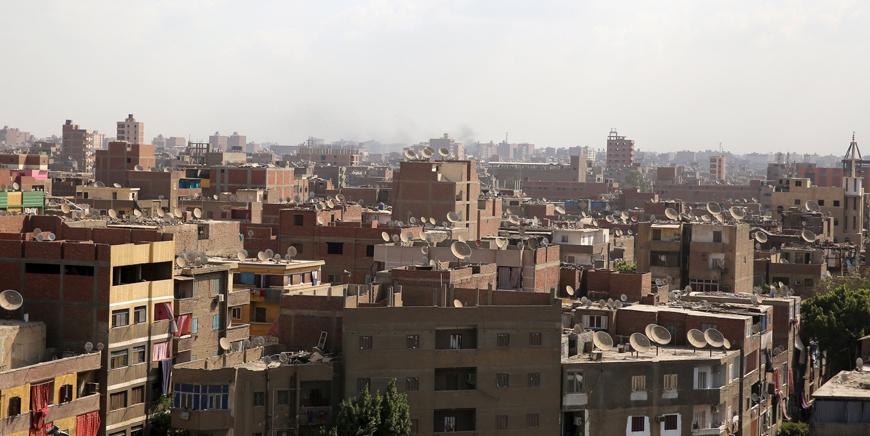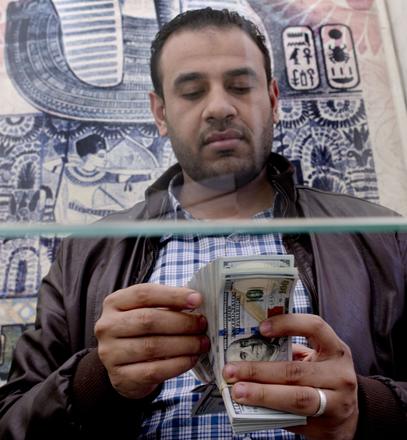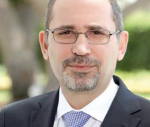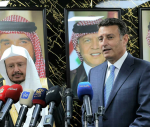You are here
‘Egypt to build 1 million homes for poor to help ease shortage’
By Reuters - Dec 09,2015 - Last updated at Dec 09,2015
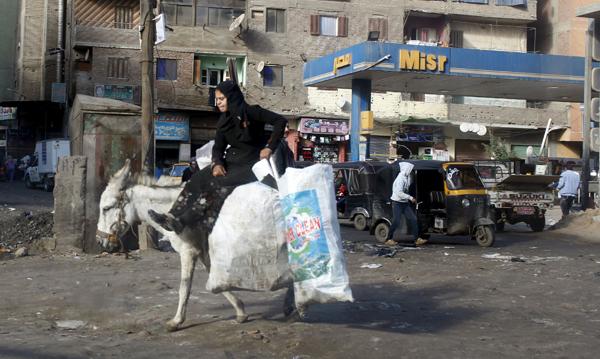
A girl rides a donkey in a shanty town in Cairo in this January 10, 2013 file photo (Reuters photo)
CAIRO — Egypt plans to build 1 million homes for poorer people at a cost of almost $20 billion over the next five years, the housing minister said, to ease a crunch that has seen slums and unlicensed buildings spread since the 2011 revolt.
With a population of about 90 million, and projected to exceed 120 million by 2050, and with many Egyptians living in sprawling slums, the country is struggling to build enough houses for the poorest in society.
So many people live in a network of tombs in Cairo that the area has become known as the City of the Dead.
Housing Minister Mustafa Madbouly told Reuters Egypt needed to build 500,000-600,000 new homes a year to keep up with demand, 70 per cent of which should be aimed at the poor.
The social housing project will see 200,000 new homes built each year, meeting over half the annual demand for cheap housing. Private developers, who have built new suburbs around Cairo, are meeting the needs of middle and higher income Egyptians who can buy homes outright or obtain mortgages.
Egypt is financing its social housing scheme through land sales to developers building higher-end homes, Madbouly said.
"This is totally being implemented by the Egyptian government and the ministry of housing with a total investment that exceeds 150 billion Egyptian pounds [$19.16 billion]," he indicated on the sidelines of the Egypt Mega Projects conference.
"We are making use of the projects we are offering to the private sector to finance and cross-subsidise the social housing programme," the minister added.
Mammoth task
Madbouly elaborated that he was also working to upgrade informal settlements, which comprise 40-50 per cent of urban areas, and to bring 24-hour piped water to all homes within three years.
Three per cent of Egyptian households have no running water at all and in rural areas some homes receive water for only 12 hours a day. Madbouly also plans to bring sewage treatment to 50 per cent of rural areas, up from 15 per cent now.
"[We are] upgrading slums and unsafe areas. We are talking here about 248 areas... 150,000 families," Madbouly indicated.
But Madbouly faces a mammoth task. Egypt's population is squeezed into a narrow strip of land along the banks of the Nile, the river delta and the Mediterranean coast. The rest of the country is largely desert.
As the population grows, the government is searching for a solution to poorly lit, poorly ventilated rows of unlicensed red brick buildings that have mushroomed in the turbulent nearly five years since the overthrow of President Hosni Mubarak.
Egypt had also planned to build 1 million homes for middle-income Egyptians by 2020 in a $35-billion joint venture with Dubai-based Arabtec.
Announced in March 2014, the project was a pillar of President Abdel Fattah Al Sisi's election campaign.
Madbouly said the latest proposal from Arabtec foresees the construction of just 13,000 units in the first phase.
"The company had continuous change of its board and its strategy and its policy. They limited their ambitious programme," Madbouly added. "It's not the project we were expecting."
That had not, however, dampened enthusiasm for Gulf investment in the most-populous Arab country, he remarked.
"We have offered several projects with a lot of Gulf country investors and we are in negotiations with some of them," the minister concluded.
Separately, the tourism minister said this week that Egypt's tourism revenues in 2015 will be at least 10 per cent below last year's after a Russian plane crash prompted Moscow and London to suspend flights, and authorities are now working to restore confidence.
Hit by political and economic upheaval since the 2011 uprising ended Mubarak's 30-year rule, Egypt's tourism sector had been set to grow this year.
A global advertising campaign aimed at reviving the industry was due to be launched on October 31, the day the airliner carrying holidaymakers from the Red Sea resort of Sharm El Sheikh crashed, killing all 224 people abroad.
The disaster prompted Russia and Britain, who have both said the crash was caused by a bomb, to suspend some flights pending reassurances over airport security. The Daesh militant group said it bombed the plane.
Speaking to Reuters on the sidelines of the Egypt Mega Projects conference, Hisham Zaazou said Egypt was working to plug any gaps in security and persuade tourists to return to its ancient sites, desert treks and beaches.
The plane crash has already resulted in 2.2 billion Egyptian pounds in direct losses though indirect costs would be larger and more difficult to calculate.
"The impact is minimal now but if it extends longer the impact will be much more," Zaazou added.
"Hopefully, things will be better in the coming year but ... people are not behind doors and once things are OK they open the door and will keep rushing in. It will take some few months later after the resumption of flights," he continued.
Image problem
Zaazou declined to say when flights were expected to resume or to give revenue projections for next year, saying the entire region was suffering from an image problem.
"This time I tell you it is different. I can't give you a date. This time it is not Egypt's problem. Egypt is also caught between what is happening in Syria and Lebanon, in Libya and down south sometimes in Sudan, even Paris now," said Zaazou.
Egypt earned about $7.2 billion in tourism revenues last year, still a far cry from around $12.5 billion before 2011.
The impact of the uprising on Egypt's foreign currency reserves has been particularly dramatic as tourists and foreign investors, key generators of foreign exchange, fled.
Foreign currency reserves have more than halved from about $36 billion before 2011 to about $16.423 billion in November.
Zaazou said he was working closely with Britain and Russia to address security concerns at airports catering to tourists.
"They want to make sure there is a checklist, a manual for every airport ... what they call screening, second screening. They are reviewing all that process," he added. "It is there but they want to see if there are additional methods, additional equipment that we can get ... and we are doing that."
Egyptian tourism has survived big setbacks in the past.
In 1997 Islamic militants killed 58 tourists and four Egyptians at a temple in Luxor, on the Nile.
Last year, the bombing of a tourist bus in Sinai killed two South Koreans and an Egyptian, reviving memories of an Islamist uprising in the 1990s that often targeted tourists.
In September, Egyptian forces mistakenly bombed a convoy of Mexican tourists in the western desert while pursuing militants. Eight Mexicans and four Egyptians were killed.
Egypt had been pinning its tourism strategy on the Red Sea resorts, which until the plane crash had managed to attract visitors despite the uncertainty.
"I act as if there's a problem. I act because the world sees things from a specific angle. We say perception is reality so I deal with this perception," Zaazou said.
"We have had problems since 30 years but the arrow of tourism has always pointed upwards. This proves the industry is resilient," he stressed.
Related Articles
CAIRO — Egypt's foreign currency reserves fell for the third consecutive month in September, according to central bank figures, putting pres
Egypt's tourism minister on Sunday announced ambitious plans to try to revive the country's tourism sector, in distress after years of political turbulence.
CAIRO — Egypt's central bank said on Monday it had devalued the Egyptian pound by 14.3 per cent to 8.95 to the US dollar to face "challenges


